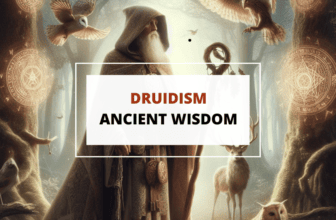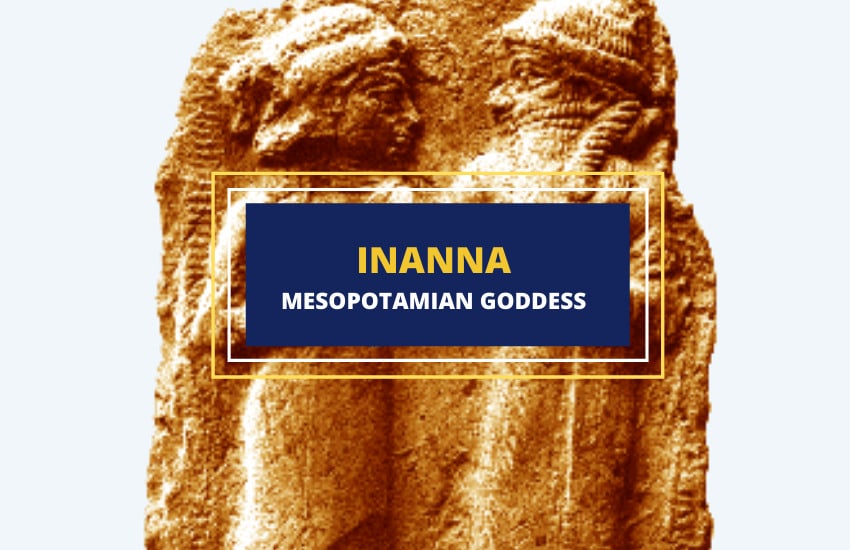
Table of Contents
Inanna is one of the oldest as well as most confusing goddesses in the world pantheon. This ancient Sumerian goddess from the Mesopotamian region of the world is viewed as a Queen of Heaven and a goddess of love, sex, and beauty, as well as of war, justice, and political rule. In some myths, she is also a goddess of rain (associated with life and fertility) and thunderstorms (associated with war).
Inanna was also worshipped under the name Ishtar by many of Sumer’s neighbors in Mesopotamia, such as the Babylonians, Akkadians, and Assyrians. It’s not exactly clear whether these were two separate goddesses of different pantheons that came to be worshipped together or if they were two names for the same goddess. Let’s look closer into her origins and importance.
Where Does Inanna Come From?
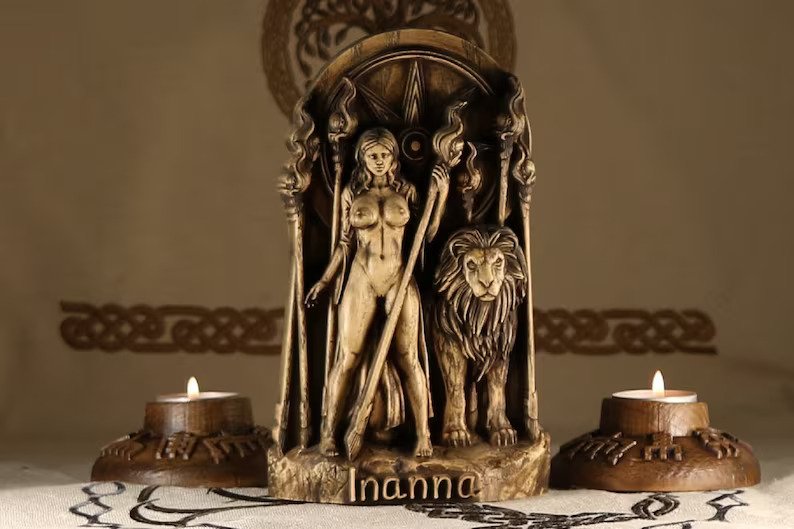
Known as the Queen of Heaven to the Sumerians, Inanna has many different mythological origins. While Inanna’s lineage is not known for certain, depending on the source, her parents are either Nanna (the male Sumerian god of the moon) and Ningal, An (the sky god) and an unknown mother, or Enlil (the wind god) and an unknown mother.
Inanna’s siblings are her older sister Ereshkigal, the Queen of the Dead, and Utu/Shamash, who is Inanna’s twin brother. Inanna also has many consorts, many of them unnamed. The most popular of her list of consorts is Dumuzi, who features prominently in the myth about her descent into the underworld.
Inanna is associated with storehouses and is therefore worshipped as a goddess of grain, wool, meat, and dates. There are also stories relating to Inanna as the bride of Dumuzi-Amaushumgalana – the god of growth, new life, and the date palm tree. Due to this association, Inanna was often called The Lady of the Date Clusters.
Inanna is also believed to be strongly linked to the ancient Greek goddess Aphrodite. As a goddess of love, Inanna/Ishtar was also a patron goddess of prostitutes and of alehouses. Inanna and Ishtar are also closely associated with the planet Venus, as are Aphrodite and her Roman equivalent – Venus herself. Inanna is also associated with Astarte. She’s present in the Hebrew Bible as the West Semitic goddess, Astarte.
A Goddess of Contradictions
How can a goddess be worshipped as both a deity of love, fertility, and life, as well as a goddess of war, justice, and political power? According to most historians, Inanna and Ishtar started out as deities of love, beauty, sex, and fertility – qualities very common to young goddesses in many world pantheons.
However, many myths involving and surrounding Inanna contained aspects of disasters, death, and vengeful wars, slowly turning her into a goddess of war as well.
This complex history of repeated conquest and re-conquest by the many nations of Mesopotamia is hardly paralleled (to that extent) in other cultures that have more “stereotypical” love and fertility goddesses.
Queen of the Universe
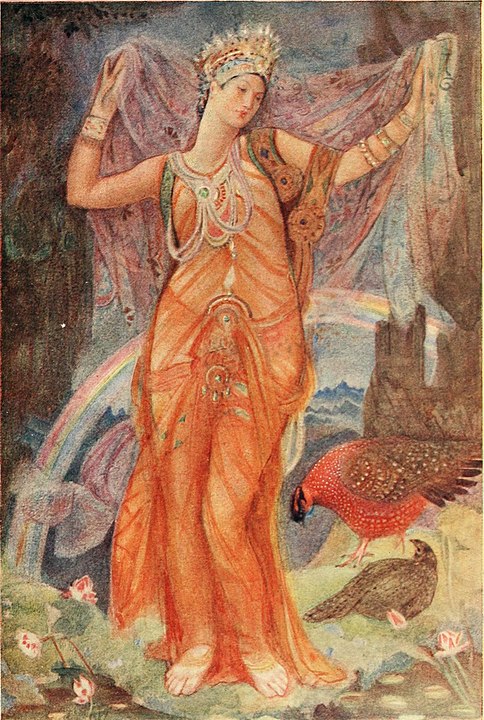
In later myths, Inanna becomes known as the Queen of the Universe, as she takes the powers of fellow deities Enlil, Enki, and An. From Enki, the God of Wisdom, she steals the mes – the representation of all positive and negative aspects of civilization. She also takes control of the mythic Eanna temple from the sky god An.
Later, Inanna becomes the arbiter of Divine Justice in Sumer and destroys the mythical Mount Ebih for daring to challenge her divine authority. She also takes revenge on the gardener Shukaletuda for having raped her and kills the bandit woman Bilulu in retribution for Bilulu murdering Dumuzid.
With each successive myth, Inanna and Ishtar claimed a higher and more authoritative position in the Mesopotamian pantheons until they eventually become one of the most revered goddesses in the region and in the world at the time.
Inanna and the Biblical Myth of the Garden of Eden
One of Inanna’s many myths is viewed as the origin of the Biblical myth of the Garden of Eden in Genesis. The myth is called Inanna and the Huluppu Tree. It takes place at the beginning of the Epic of Gilgamesh, and involving Gilgamesh, Enkidu, and the Netherworld.
In this myth, Inanna is still young and is yet to reach her full power and potential. She is said to have found a special huluppu tree, likely a willow, at the bank of the river Euphrates. The goddess liked the tree so she decided to move it to her garden in the Sumerian city of Uruk. She wanted to let it grow freely until it was big enough for her to carve it into a throne.
However, after a while, the tree was “infested” with several undesirable individuals – the monstrous Anzû bird, an evil serpent “who knows no charm”, and Lilitu, seen by many historians as the basis of the Jewish character Lilith.
When Inanna saw her tree becoming the residence of such beings, she fell into sorrow and started to cry. That’s when her brother (in this story), the hero Gilgamesh came to see what was going on. Gilgamesh then killed the serpent and chased Lilitu and the Anzû bird away.
Gilgamesh’s companions then chopped down the tree on his order and fashioned it into a bed and a throne which he then gave to Inanna. The goddess then made a pikku and mikku out of the tree (believed to have been a drum and drumsticks) and gave them to Gilgamesh as a reward.
Inanna’s Descent into the Underworld
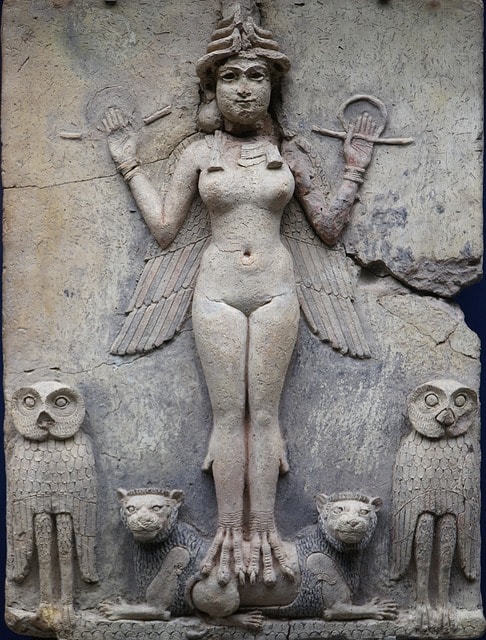
Often considered the first epic poem, The Descent of Innana is a Sumerian epic that dates between 1900 to 1600 BCE. It details the journey of the goddess from her abode in the heavens into the underworld to visit her recently widowed sister, Ereshkigal, the Queen of the Dead, and possibly to challenge her power. This is possibly the most famous myth concerning Inanna. The story symbolizes various themes such as death, rebirth, and the cyclical nature of life and seasons.
Inanna’s Decision to Descend
Inanna, the Queen of Heaven, decides to visit the underworld, the realm of her recently widowed sister, Ereshkigal, the Queen of the Dead. It’s not entirely clear why she chooses to do this, but her journey is seen as ambitious and dangerous. Before embarking, Inanna informs her ‘servant’ Ninshubur (also a goddess) of her intentions and gives instructions on what to do if she doesn’t return.
Inanna Prepares for the Journey
Inanna dons several items of clothing and jewelry, which are symbols of her power and status. These include her crown, lapis lazuli beads, and other adornments. She goes into the underworld armed with her powers, represented by this jewelry and clothes. Her sister doesn’t appear to be happy that Inanna is on her way to visit her and asks the sentries to lock the seven gates of hell against Inanna. She instructs the guards to only open the gates, one at a time, once Inanna has removed a piece of her royal garments.
The Seven Gates
As Inanna travels through the seven gates of the underworld, the sentry at each gate asks Inanna to remove a piece of her clothing or accessory, including her necklace, crown, and scepter. By the seventh gate, Inanna is completely naked and removed of her powers. Finally, she goes before her sister, naked and bowed low with the indignity of her descent.
Ereshkigal’s Wrath
Upon Inanna’s arrival, Ereshkigal is in mourning and, in her anguish, she isn’t happy to see her sister. With the assistance of the Anunnaki, the judges of the underworld, Ereshkigal condemns Inanna to death. Inanna’s corpse is then hung on a hook. It’s described in this way:
The annuna, the judges of the underworld, surrounded her
(Wolkstein and Kramer, 60)
They passed judgment against her.
Then Ereshkigal fastened on Inanna the eye of death
She spoke against her the word of wrath
She uttered against her the cry of guilt
She struck her.
Inanna was turned into a corpse
A piece of rotting meat
And was hung from a hook on the wall.
Ninshubur Intervenes
After Inanna doesn’t return, Ninshubur follows her instructions, seeking help from the gods. Enlil and Nanna refuse to help, but Enki, the god of wisdom and water, is more compassionate. He creates two sexless beings, the gala-tura and the kur-jara, from the dirt under his fingernails. They are sent to the underworld with the food and water of life.
These creatures find Ereshkigal in labor-like pain and show her sympathy, which wins her favor. In gratitude, she offers them a gift, and they request Inanna’s body. They sprinkle the food and water of life on Inanna, reviving her.
A Life for a Life
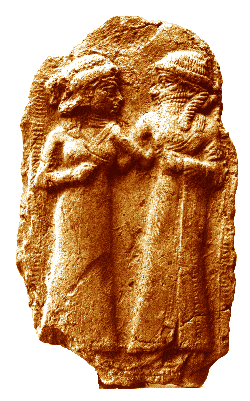
However, Inanna can’t leave that easily. The rule of the underworld is that no one can leave without another taking their place. Inanna has to find a replacement for her in the underworld, if she is to leave it permanently. In the land of the living, Inanna finds her sons and others mourning her loss and descent into eh underworld.
However, her lover, Dumuzi, is dressed in shining clothes and is apparently enjoying himself without mourning Inanna’s ‘death’. Angered at this, Inanna chooses Dumuzi as her replacement, and she orders the two demons to take him away. Dumuzi’s sister, Geshtinanna, comes to his rescue and volunteers to take his place in the underworld. It is then stated that Geshtinanna will spend half the year in the underworld and Dumuzi would spend the rest, corresponding to the seasonal cycle.
Parallels with Persephone’s Myth
The myth of Inanna’s descent echoes that of Persephone’s abduction by Hades in Greek mythology, a story that explains the origins of the seasons. Many have speculated that Inanna’s descent into the underworld also explains the origin of the seasons.
The myth also has themes of justice, power, and death, and is a work that praises Ereshkigal, the Queen of the Dead, who is successful in protecting her right to power against Inanna’s attempts at usurpation.
Inanna’s Symbols

Inanna is associated with several important symbols that represented different aspects of her domain. Here are some of the main ones.
- Eight-pointed Star: Inanna was often associated with an eight-pointed star or a rosette, which represented the planet Venus. It’s known as the Star of Inanna. As the morning and evening star, Venus and its phases are linked to Inanna’s dual nature as a goddess of both love and war.
- Lion: The lion, a symbol of strength, authority, and power, is associated with Inanna in her role as a goddess of war. The lion is also Inanna’s mount. Many ancient artworks depict Inanna riding a chariot pulled by lions or standing with lion companions.
- Hook-Shaped Knot of Reeds: These are sometimes linked with Inanna and might be connected to her origins as a vegetation or grain goddess, though their exact meaning is not entirely clear.
- Doves: In some instances, doves are linked to Inanna and her later counterpart, Ishtar, especially in their roles as goddesses of love and fertility.
- Date Palm: Occasionally, the date palm, a symbol of fertility, is associated with Inanna, emphasizing her role as a fertility deity.
Importance of Inanna in Modern Culture
Unlike most Greek, Roman, and Egyptian deities, including Aphrodite and Venus, Inanna/Ishtar and most other Mesopotamian deities have fallen into obscurity today. Many would say that the French Israeli singer Ishtar is more popular today than the mighty Queen of the Universe from a few millennia ago.
Still, representations or inspirations of Inanna and Ishtar can be seen in some modern media. For example, the character of Sailor Venus in the popular manga and anime series Sailor Moon is based on the Inanna. There is also a soul-eating Egyptian mummy named Ishtar in the hit TV series Hercules: The Legendary Journeys. The character of Buffy Summers from Buffy the Vampire Slayer is also said to have been partly inspired by Inanna/Ishtar.
The 2003 opera of John Craton called Inanna: An Opera of Ancient Sumer was inspired by the goddess, and there have been quite a few rock and metal songs named after both Inanna and Ishtar.
Conclusion
Known as the Queen of Heaven, Inanna is one of the earliest deities whose worship dates back to around 4000 BCE. She became one of the most respected and loved of the Sumerian pantheon and would go on to influence many subsequent goddesses in other cultures, including in the Greek and Roman mythologies. She features in several important myths, including The Descent of Inanna into the Underworld, one of the oldest epics in the world.
Related articles
Top 20 Inventions and Discoveries of Mesopotamia
Hera: Greek Queen of the Gods and Her Importance
Medb – Legendary Queen of Ireland
Queen Boudica – A British Celtic Hero of Independence
Hippolyta – Queen of the Amazons and Daughter of Ares







